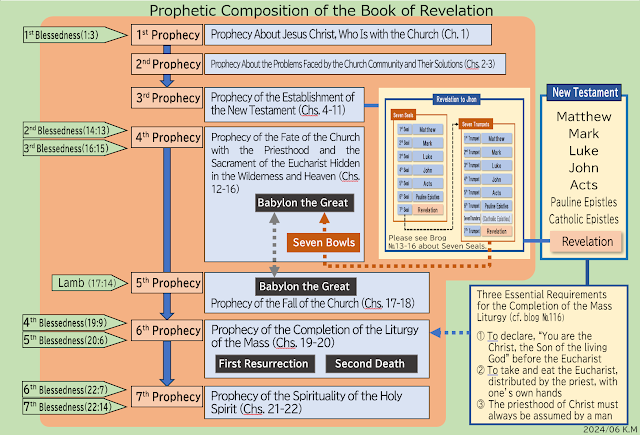2024/09/23
162. My House
The crucifix of San Damiano, much inspired by the Gospel of John and the Book of Revelation, made a strong impression on Francis's vision, and he grasped it. It is said that he heard the voice saying, "Francis go and repair my house which, as you see, is all falling down", three times from the crucifix. He set about repairing the church building.
When Jesus went up with his disciples to Jerusalem for Passover and saw in the temple those who were selling oxen and sheep and pigeons and the moneychangers at their business, he drove all the sheep and cattle out of the temple, scattered the money of the moneychangers and overturned their tables. Then he told those who sold the pigeons, "Take these things away; you shall not make my Father's house a house of trade" (John 2:16). It is written, "His disciples remembered that it was written, 'Zeal for thy house will consume me.'" (2:17). For Jesus, who said, "All that the Father has is mine" (16:15), the "Father's house" was "my house". The zeal for his house that the Father had was also Jesus'. Francis must have shared the zeal.
Jesus, in this same scene, further responded to the Jews, saying, "Destroy this temple, and in three days I will raise it up" (2:19), as they pressed him saying, "What sign have you to show us for doing this?" (2:18). The Gospel explains that "he spoke of the temple of his body" (2:21). For Francis at that time, for us as well, "his body" is the Holy Eucharist. Hence, the command "Repair my house" was linked to the completion of the Mass liturgy.
However, even though the New Testament had already been established more than 800 years earlier, the Church at that time was amidst the fourth prophecy of the Prophetic Composition of the Book of Revelation (see below), the Prophecy of the Fate of the Church with the Priesthood and the Sacrament of the Eucharist Hidden in the Wilderness and Heaven (Chapters 12-16). Furthermore, the course of history was about to lead the Church towards the fifth prophecy, the Prophecy of the Fall of the Church (chapters 17-18). In this interstice, using the subject of John's Gospel and Revelation, God showed Francis the entire Kingdom of God by visualising it.
Francis saw the "truth" of the "Kingdom of God" on the crucifix of San Damiano and realised the "life". That was the life of Christ. He looked over the whole creation saved by the life of Christ. Then he looked back. He wanted to show the "way" to the "life" to those who sought it. Receiving the "Kingdom of God" as truth, he had in his mind two gospel themes about the "Kingdom of God": poverty and littleness. Jesus said, "Blessed are you poor, for yours is the kingdom of God" (Luke 6:20). He lived among such people, which is corroborated by Jesus' words when he sent his disciples (cf. Luke 9:3). The poverty became for Francis a concrete way of following Christ.
Jesus also said, "Truly, I say to you, whoever does not receive the kingdom of God like a child shall not enter it" (Luke 18:17). That was when the disciples rebuked those who brought their children so that Jesus might touch them. The blessedness of those who accept the washing of God is in "getting touched by Jesus". Jesus' washing the disciples' feet was the act of "having loved his own who were in the world, he loved them to the end" (John 13:1). Thus, those who "receive the kingdom of God like a child" are the ones who see themselves as a little one whom God can wash at any time.
Hence, Francis was convinced through the Words that being poor and least was a sign that pointed the "way" to the "truth" of the "Kingdom of God". He concentrated on that and lived it thoroughly. He lived his life with a direct belief in the words of Jesus: "I am the way, and the truth, and the life; no one comes to the Father, but by me" (John 14:6). Relying on his passion like this, God made him bear the cross of Jesus. It was the cross of San Damiano, painted with the Gospel of John and the book of Revelation as its subject. He undertook the name of Jesus and bore his love and "Kingdom of God".






